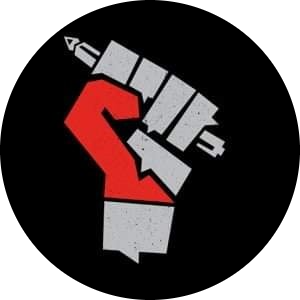Aurat March has become a voice of the voiceless women in Pakistani who have been exploited, harassed, subjected to violence. This part of our population is amongst the subaltern in the social sphere, and yet makes more than 50% of people in this country. The passage through the ages has a new tern on the horizon with the rise of liberal feminists and leftist in the shape of the annual social and political demonstration of women on international women’s day.
The women pour into the street with plaque cards echoing different slogans; occupying public space, a spectacle that still remains rare in our part of the world. This annual march to highlight the issues faced by women and to bring these into the mainstream discourse has been targeted by the mainstream media and hence is now a controversial topic. Slogans challenging the suffocating restrictions on women (such as lo baith gai sahi se [here, I am sitting properly now]) and expressing individual agency (such as Mera Jism, Meri Marzi [My body, my choice]) have been framed within the religion-cultural discourse by conservatives and likened to disrespect for religious and traditional values. Such slogans have been at the centre of all discussion about the Aurat March, reducing the movement to plaque cards, rather than discussing the ideology or the manifesto behind it.
The motive of such slogans and plaque cards is to voice the absurdity of the patriarchal order, which aims to regulate even the most basic and every-day actions of women, leaving them bereft of all agency and autonomy. The movement also aims to change the mainstream discourse in the country as well, and for that, it requires media attention. But interestingly, or rather sadly, the only frame of reference that women can be discussed within mainstream media is a religio-nationalist discourse, that already has an image of the ideal woman who bears upon her body the marks of national and religious pride. In such a discourse, a women’s body belongs to the nation, belongs to religion, tradition, customs, it belongs to all but herself.
The issue that this year’s Aurat March aims to highlight is the gender pain gap; the vastly differential access to healthcare services that women have. When bodies are used as canvases to paint portraits of religio-culture identity, who pays attention to what the body needs?
However, the Aurat March has a looming question ahead; any social movement in society needs to perform two tasks. Firstly, it needs to act as a pressure group to draw attention to issues and force some degree of legislation or implementation on it. The second task, and the much more difficult one, in my opinion, is engaging with other ideologies in society to carve out a place for itself and to establish itself in the cultural imagination of the people. Aurat March has captured our collective imagination, engaging with environmentalism, socialism and other fringe progressive ideologies.
But perhaps one thing that the movement is yet to do is to occupy space in the mainstream media, not as a movement continuously justifying its existence within a narrow frame of reference but portraying the women and their issues on its own terms. It is unlikely that this feat can be achieved through logic and rationale in a country where the logic of the game is a conservative interpretation of religion. We must abandon rational arguments for this, and look towards art and creative expression to occupy that space.
We saw a glimpse of this in the form of Churails (lit. Witches) last year that portrayed the violence, discrimination and marginalization that women have to go through. Granted, the series had its own shortcomings in terms of how tone-deaf it was in its portrayal of class, but it was a valuable contribution to the current feminist discourse.
This also highlights another interesting idea, the series was released on an online platform and not on TV. The rise of online spaces as a safe haven for content has also provided fertile ground for us to take advantage of that. The Aurat March is an attempt to raise awareness and to work towards changing women status, rights and role in society. The media has played a negative role in the portrayal of the demonstration to the public. The cracks in the edifice of structure can be filled with a sound role of mainstream or alternative media.
This article was contributed by Salman G.R. To write for The Students Herald contact: writetostudentsherald@gmail.com
The Students’ Herald News Desk focuses on reporting the latest news regarding student politics and campus updates to you.
The News Desk can be reached at admin@thestudentsherald.com




